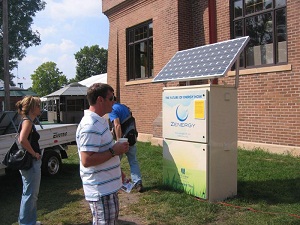Minnesota Power ups solar incentive programs
 At a time when many utilities are curbing solar incentives because of solar’s popularity, Minnesota Power boosted its SolarSense incentives program. Under the new incentive program, non-profits could qualify for a rebate of up to $4,750 per kilowatt, while others, including homeowners, could qualify for lesser amounts.
At a time when many utilities are curbing solar incentives because of solar’s popularity, Minnesota Power boosted its SolarSense incentives program. Under the new incentive program, non-profits could qualify for a rebate of up to $4,750 per kilowatt, while others, including homeowners, could qualify for lesser amounts.
The new incentives start at $2,000 per kilowatt—and go up from there. Customers can also qualify for an additional $1,000 per kilowatt rebate for PV made in Minnesota. Customers that also meet energy efficiency standards can qualify for an additional $1,000 per kilowatt rebate. Nonprofits can qualify for additional rebates, according to Minnesota Power.
In all, a 5-kilowatt array under the program could qualify for more than $20,000 in solar rebates and incentives, and that’s before considering the federal 30 percent rebate. The average system size in Minnesota Power’s service area is 3.6 kilowatts.
The company also net meters PV system owners, according to Al Lian, a marketing analyst with Minnesota Power.
“Our net meters are essentially what the retail price of electricity is. We have a tiered rate system, but its pretty close,” he said.
The utility made the change partly because people weren’t using it, according to Lian.
“That’s part of the reason; the driving factor was perhaps not so much the rebate amount, but the economy," he said. "Solar is a big outlay of cash and the payback is pretty long.”
By boosting the incentive program, the company hopes more people will go solar.
The update is basically double what the utility previously offered, according to the Star Tribune. At the new levels, they’re comparable to the incentives that Xcel Energy offers.
The utility plans to fund the program with $346,000, which is funded through a fee on customer’s bills.
“The state of Minnesota has a statute in which utilities are requited spend 1.5 percent of our annual kilowatt/hour budget on energy conservation. We collect that amount from all of our customers; those are the dollars that fund our conservation program. The dollars that go to rebates come out of that money,” Lian said.



